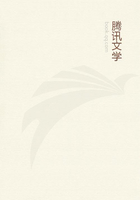That it is possible to arrange all the varied forms of animals into groups,having this sort of singular subordination one to the other,is a very remarkable circumstance;but,as Mr.Darwin remarks,this is a result which is quite to be expected,if the principles which he lays down be correct.Take the case of the races which are known to be produced by the operation of atavism and variability,and the conditions of existence which check and modify these tendencies.Take the case of the pigeons that I brought before you;there it was shown that they might be all classed as belonging to some one of five principal divisions,and that within these divisions other subordinate groups might be formed.The members of these groups are related to one another in just the same way as the genera of a family,and the groups themselves as the families of an order,or the orders of a class;while all have the same sort of structural relations with the wild rock-pigeon,as the members of any great natural group have with a real or imaginary typical form.Now,we know that all varieties of pigeons of every kind have arisen by a process of selective breeding from a common stock,the rock-pigeon;hence,you see,that if all species of animals have proceeded from some common stock,the general character of their structural relations,and of our systems of classification,which express those relations,would be just what we find them to be.In other words,the hypothetical cause is,so far,competent to produce effects similar to those of the real cause.
Take,again,another set of very remarkable facts,--the existence of what are called rudimentary organs,organs for which we can find no obvious use,in the particular animal economy in which they are found,and yet which are there.
Such are the splint-like bones in the leg of the horse,which I here show you,and which correspond with bones which belong to certain toes and fingers in the human hand and foot.In the horse you see they are quite rudimentary,and bear neither toes nor fingers;so that the horse has only one "finger"in his fore-foot and one "toe"in his hind foot.
But it is a very curious thing that the animals closely allied to the horse show more toes than he;as the rhinoceros,for instance:he has these extra toes well formed,and anatomical facts show very clearly that he is very closely related to the horse indeed.So we may say that animals,in an anatomical sense nearly related to the horse,have those parts which are rudimentary in him,fully developed.
Again,the sheep and the cow have no cutting-teeth,but only a hard pad in the upper jaw.That is the common characteristic of ruminants in general.But the calf has in its upper jaw some rudiments of teeth which never are developed,and never play the part of teeth at all.
Well,if you go back in time,you find some of the older,now extinct,allies of the ruminants have well-developed teeth in their upper jaws;and at the present day the pig (which is in structure closely connected with ruminants)has well-developed teeth in its upper jaw;so that here is another instance of organs well-developed and very useful,in one animal,represented by rudimentary organs,for which we can discover no purpose whatsoever,in another closely allied animal.The whalebone whale,again,has horny "whalebone"plates in its mouth,and no teeth;but the young foetal whale,before it is born,has teeth in its jaws;they,however,are never used,and they never come to anything.But other members of the group to which the whale belongs have well-developed teeth in both jaws.
Upon any hypothesis of special creation,facts of this kind appear to me to be entirely unaccountable and inexplicable,but they cease to be so if you accept Mr.Darwin's hypothesis,and see reason for believing that the whalebone whale and the whale with teeth in its mouth both sprang from a whale that had teeth,and that the teeth of the foetal whale are merely remnants--recollections,if we may so say--of the extinct whale.So in the case of the horse and the rhinoceros:suppose that both have descended by modification from some earlier form which had the normal number of toes,and the persistence of the rudimentary bones which no longer support toes in the horse becomes comprehensible.
In the language that we speak in England,and in the language of the Greeks,there are identical verbal roots,or elements entering into the composition of words.That fact remains unintelligible so long as we suppose English and Greek to be independently created tongues;but when it is shown that both languages are descended from one original,the Sanscrit,we give an explanation of that resemblance.In the same way the existence of identical structural roots,if I may so term them,entering into the composition of widely different animals,is striking evidence in favour of the descent of those animals from a common original.
To turn to another kind of illustration:--If you regard the whole series of stratified rocks--that enormous thickness of sixty or seventy thousand feet that I have mentioned before,constituting the only record we have of a most prodigious lapse of time,that time being,in all probability,but a fraction of that of which we have no record;--if you observe in these successive strata of rocks successive groups of animals arising and dying out,a constant succession,giving you the same kind of impression,as you travel from one group of strata to another,as you would have in travelling from one country to another;--when you find this constant succession of forms,their traces obliterated except to the man of science,--when you look at this wonderful history,and ask what it means,it is only a paltering with words if you are offered the reply,--'They were so created.'















